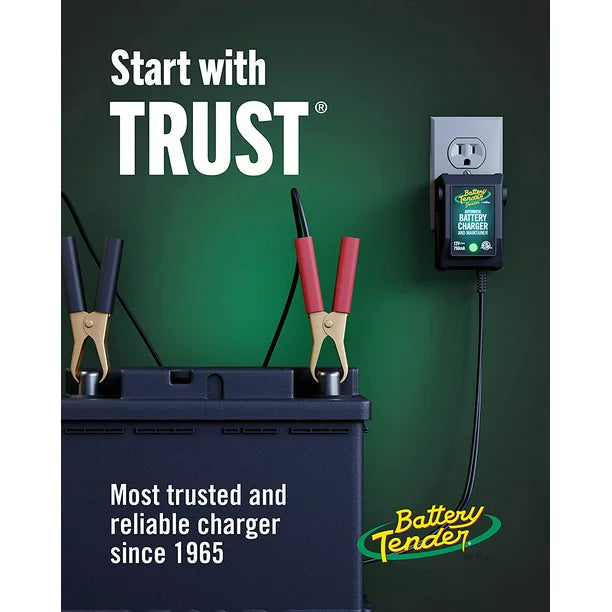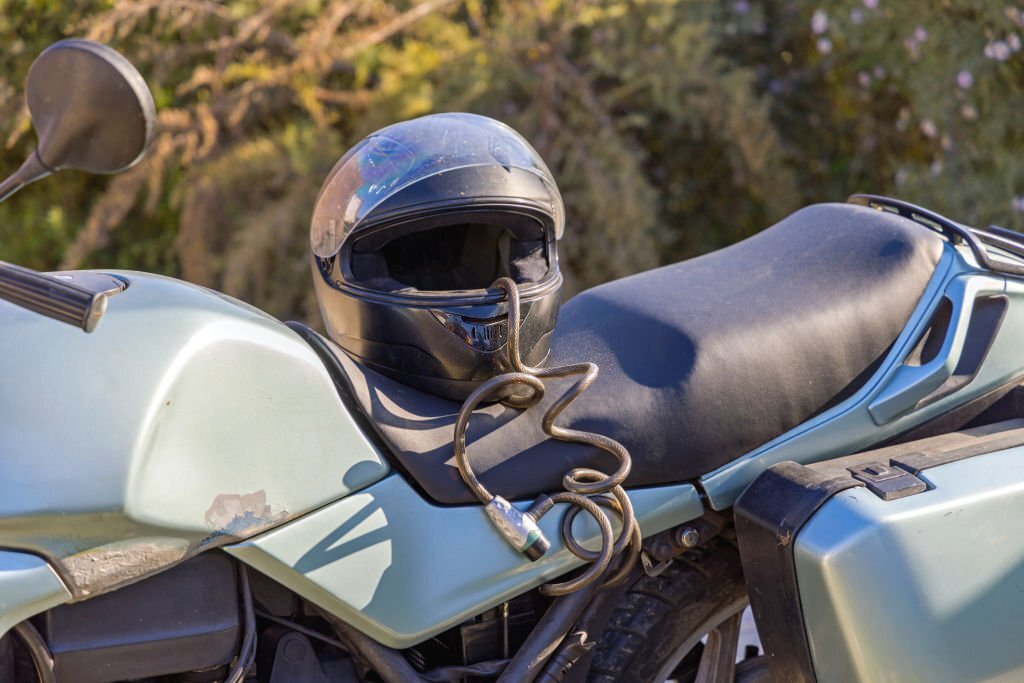When it comes to motorcycle batteries, understanding their sizes and specifications is essential for ensuring compatibility and optimal performance. Motorcycle battery sizes can vary depending on the make and model of the bike, but there are some general guidelines to help you navigate through the options available.
Are Motorcycle Batteries a Standard Size?
No, motorcycle batteries are not a standard size across all bikes. Different motorcycles require different battery sizes to fit their specific compartments and electrical systems. The battery size is typically determined by factors such as the motorcycle's engine size, power requirements, and design.
To find the right battery size for your motorcycle, we have a parts finder on our homepage where you can enter the details of your bike and the correct battery will be listed for your bike. If you are unsure please feel free to contact us and we can assist you. It is crucial to consult your motorcycle's owner's manual or check the manufacturer's recommendations. These resources will provide specific information on the compatible battery sizes for your bike.

How Do You Read a Motorcycle Battery Number?
Motorcycle battery numbers can be a bit confusing if you are unfamiliar with how to interpret them. They usually consist of a combination of letters and numbers that convey important information about the battery's specifications.
One common format for motorcycle battery numbers is the Battery Council International (BCI) designation. The BCI number is typically a three-digit code, such as "YTX12-BS." Here's how to read it:
- The first two characters, "YT" in this example, indicate the battery type or brand code.
- The third character, "X," represents the battery's configuration or shape.
- The number following the hyphen, "12" in this case, denotes the voltage rating of the battery. Most motorcycle batteries are 12-volt batteries.
- The final two characters, "BS" in this example, indicate the battery's features and specifications, such as the terminal type and capacity.
Reading and understanding the battery number can help you identify the right replacement battery when shopping for a new one.
How Many CCA Do I Need for My Motorcycle?
CCA (Cold Cranking Amps) is a measure of a battery's ability to start the engine in cold temperatures. It represents the maximum amount of current the battery can deliver for 30 seconds at 0 degrees Fahrenheit (-17 degrees Celsius) while maintaining a voltage above 7.2 volts for a 12-volt battery.
The required CCA for your motorcycle depends on factors such as the engine size and the environmental conditions you typically ride in. Higher CCA ratings are generally recommended for larger displacement engines and colder climates, as they provide more power to start the engine in challenging conditions.
To determine the appropriate CCA for your motorcycle, consult your motorcycle's owner's manual or contact the manufacturer. They will provide specific guidelines based on your bike's requirements.

How Many Amps Is a 12V Bike Battery?
A 12-volt bike battery typically has a capacity rating expressed in ampere-hours (Ah) rather than amps. The ampere-hour rating represents the battery's capacity to provide a certain amount of current over a specific period.
The ampere-hour rating determines the battery's energy storage capacity and influences its runtime. Higher ampere-hour ratings indicate a larger capacity and potentially longer battery life. However, it's important to note that a higher capacity battery may also be physically larger, so it's crucial to consider size constraints when selecting a replacement battery.
To determine the ampere-hour rating suitable for your motorcycle, refer to your motorcycle's owner's manual or consult the manufacturer's recommendations.
How Do I Check the Amperage of My Motorcycle Battery?
Checking the amperage of a motorcycle battery is not a common practice. Instead, motorcycle batteries are typically rated in terms of voltage (e.g., 12 volts) and capacity (e.g., Ah).
To determine the voltage of your motorcycle battery, you can use a multimeter set to the DC (Direct Current)voltage measurement mode. Connect the multimeter's probes to the battery terminals, ensuring proper polarity, and read the voltage displayed on the multimeter's screen. A fully charged 12-volt motorcycle battery should read around 12.6 to 12.8 volts.
To check the battery's capacity or state of charge, you can use a battery tester or a battery load tester. These tools apply a controlled load to the battery and measure its voltage response. By comparing the measured voltage with the manufacturer's specifications, you can get an indication of the battery's condition.
Remember to take proper safety precautions when working with batteries. Wear protective gloves and eyewear, and avoid shorting the battery terminals or causing sparks.
Can You Use Any 12V Battery on a Motorcycle?
While a 12-volt battery is the standard for most motorcycles, it is essential to ensure compatibility beyond just the voltage rating. Different motorcycles have specific requirements for battery size, terminal configuration, and electrical capacity. Therefore, it is not recommended to use just any 12-volt battery on a motorcycle without considering these factors.
To choose the right battery for your motorcycle, it is crucial to consult your motorcycle's owner's manual or check the manufacturer's recommendations. They will provide the necessary information regarding the battery type, size, and specifications suitable for your specific bike model.
Using a battery that doesn't meet the requirements of your motorcycle can result in poor performance, potential damage to the electrical system, and even safety hazards. Therefore, it's best to adhere to the manufacturer's guidelines when selecting a replacement battery.
Is a Higher CCA Battery Better?
In general, a higher CCA (Cold Cranking Amps) rating indicates a battery's ability to deliver more power during cold starting conditions. A higher CCA battery can provide a stronger initial burst of current, which is particularly important in colder climates or for larger displacement engines that require more power to start.
However, it's important to note that using a battery with an excessively high CCA rating may not necessarily benefit your motorcycle. If the battery's CCA rating far exceeds your motorcycle's requirements, it may be unnecessary and could lead to increased costs without providing significant advantages.
To determine the appropriate CCA rating for your motorcycle, consult your motorcycle's owner's manual or contact the manufacturer. They will provide the recommended CCA range based on your bike's engine size and typical riding conditions.
Is It OK to Have More CCA Than Needed?
Having a slightly higher CCA rating than what is required for your motorcycle is generally acceptable and can provide an additional margin of safety. The extra power can be useful in extreme weather conditions or situations where the engine might require more starting power.
However, it's important not to go overboard and choose a battery with a significantly higher CCA rating than necessary. Oversizing the battery in terms of CCA can result in increased costs, larger physical size, and potential compatibility issues with the battery compartment or electrical system.
It's best to stick within the recommended CCA range provided by the motorcycle manufacturer. This ensures that the battery meets the necessary power requirements without being excessive or causing compatibility problems.

What Should a 12 Volt Motorcycle Battery Read When Fully Charged?
A fully charged 12-volt motorcycle battery should read around 12.6 to 12.8 volts when measured with a multimeter. This voltage range indicates a healthy and fully charged battery. Can check out our range of battery testers on our website to ensure your battery is in good condition.
Keep in mind that the voltage readings can vary slightly depending on factors such as temperature and the specific battery chemistry (e.g., lead-acid, lithium-ion). It's also important to note that the voltage may drop slightly after the battery has been sitting idle for a short period. This is normal and should not be a cause for concern.
If the battery voltage is consistently below the recommended range of 12.6 to 12.8 volts, it may indicate that the battery is not fully charged or that it is experiencing a problem. In such cases, it is advisable to recharge the battery using an appropriate battery charger to restore its optimal charge level.
Regularly checking the voltage of your motorcycle battery can help you monitor its state of charge and ensure it remains in good condition. If you notice a significant drop in voltage or repeated low voltage readings, it may be a sign that the battery is nearing the end of its lifespan or that there is an underlying issue that requires attention.
Can You Put a Bigger Battery in a Motorcycle?
In general, it is possible to put a slightly larger battery in a motorcycle as long as it fits within the battery compartment and does not interfere with other components or wiring. However, it is crucial to exercise caution and consider several factors before opting for a bigger battery.
Firstly, check the physical dimensions of the larger battery to ensure it will fit securely and properly within the battery compartment of your motorcycle. Make sure there is sufficient clearance and that the terminals align correctly with the wiring connections.
Secondly, consider the electrical capacity and compatibility. A significantly larger battery may have a higher capacity, which can be beneficial in terms of extended runtime and power delivery. However, it is important to ensure that the electrical system of your motorcycle can handle the increased load without causing any issues or damage.
Lastly, consult your motorcycle's owner's manual or contact the manufacturer to understand the recommended battery size and specifications. They can provide guidance on the maximum allowable battery size and any potential implications of using a larger battery.
Keep in mind that while a larger battery may offer certain advantages, such as increased capacity or longer service life, it may also come with downsides such as added weight or potential difficulties during installation. It's essential to weigh the benefits and drawbacks before deciding to install a bigger battery in your motorcycle.

As you can see, understanding motorcycle battery sizes is crucial for selecting the right battery for your bike. From interpreting battery numbers to considering CCA ratings and voltage readings, each aspect plays a vital role in ensuring optimal performance and compatibility.
At Moto1, we offer a wide range of motorcycle batteries, including lead-acid and absorbed glass mat (AGM) batteries, to suit various motorcycle models and requirements. Our collection of batteries, lithium batteries & AGM batteries provides options to cater to different power needs and preferences.
Remember, when it comes to motorcycle battery sizes, it's essential to refer to the manufacturer's guidelines, consult your motorcycle's owner's manual, and choose a battery that meets the specific requirements of your bike. We also have parts finder to help you find the correct parts to fit your ride.
Happy Riding!





